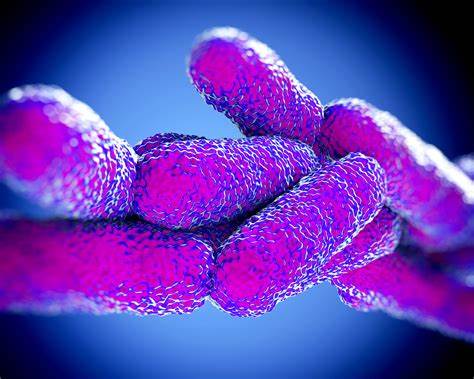This guide explains how to control or prevent a risk of legionella. If you need to understand the risks of legionella, this page will help you understand the ways to control the spread.
What Do You Need To Do To Control Legionella?
Legionnaire's disease is a relatively fatal form of pneumonia contracted if a person inhales airborne water droplets containing its specific bacteria.
These droplets can form in the air through hot and cold water outlets, hydrotherapy baths, hot tubs, aerosols, showers, whirlpools and wet air conditioning plants.
Virtually anyone can develop the disease; however, the elderly, alcoholics, smokers and those with diabetes, kidney disease, chronic respiratory diseases and cancer are most at risk of contracting the illness from contaminated substances and particles.
Health regulations 2002 COSHH is often known as Control of Substances Hazardous to Health and is mainly imposed within the workplace by employers to protect employees from the disease.
Anyone with the disease must begin to seek treatment and implement ways to control the risks in their home or properties.
Health and social care providers, by law, must carry out total risk assessments of all hot and cold water systems on-site and on their properties as part of their work activities and work regulations. They must also ensure all control measures are dealt with and systems have regular maintenance for efficient prevention.
Legionella bacteria are typically discovered in water, and they will often multiply in temperatures of 20-45°C, where nutrients are available.
So the best way to manage and control the spread or contraction of Legionella bacteria is to control the temperatures of your hot water cylinders and cold water tanks. That way, there will be less exposure to harmful particles.
Using Temperature Control
Legionella is a bacteria that you may commonly discover in your water supply, and they often multiply, especially in temperatures of around 20-40°C. The Legionella bacteria become dormant under temperatures of 20°C, yet cannot survive at temps higher than 60°

Many professionals or key personnel use the primary method to control Legionella risk by controlling the water temperature. You or the professionals must operate water services at any comfortable temperature that will prevent Legionella growth:
You should store the water inside calorifiers (hot water storage cylinders) at 60°C or above. Warm temperatures will only promote further growth. You should distribute all hot water at approximately 50°C or higher.
Ensure all thermostatic mixer valves are adequately fixed as close to outlets, especially where your assessors have identified scald risks. It is vital that cold water is distributed and stored below 20°C, as this will stop existing bacteria from multiplying as they may in warm water.
It's paramount that you hire a competent person to perform routine checks and inspections on your water system, ensuring they clean it accordingly.
It is your job to point out the sentinel outlets, meaning those closest and furthest to your cylinder or water tank, when you have monthly checks of your systems distribution temperatures. You must also have them check the temperatures of your hot water cylinder each month and cold water tank every six months or so.
If your water is constantly stagnant, Legionella bacteria are more likely to experience growth. To reduce any risks, you'll want to have the dead ends or legs of your pipework removed and flush out any outlets that aren't used frequently; this includes taps and showerheads.
You can do so weekly, alongside cleaning and de-scaling the hoses and showerheads quarterly. Ensure your cold water storage tanks are cleaned periodically and have the water drained from your hot water cylinders, as this will allow you or your professional to search for debris and any signs of corrosion.
Design systems to incorporate into your property or building that will minimise Legionella growth:
Keep your pipework short and direct wherever possible.
Ensure your tanks and pipes are adequately insulated.
Continue using materials that do not encourage Legionella growth throughout your home.
Fit your tanks with sufficient insect screens and lids to prevent any contamination in the future.
For those who have had a thorough risk assessment completed on your property, it's paramount to record it, either digitally or physically, as a written scheme.
That way, you can present evidence of all actions designed to reduce or eliminate existing risks. A more helpful way of recording the temperature of your water and various other checks to examine how appropriately you are coping with the risks. 
Steps to Manage the Risk from Legionella
Identify and Assess the Risk
The first step that will ensure your property is 100% safe from the risks of spreading Legionnaire's disease is by identifying and assessing the risks of the bacteria and disease, as this will often inform you of ways to conquer the situation. Landlords must assess sources for signs or risks of Legionella developing as its legal duty.
A competent person should carry out thorough Legionella Risk Assessments; a good candidate for the job is an external consultancy agent, especially those with in-depth knowledge of the bacteria and disease.
Having an experienced professional who has carried out numerous assessments within residential properties is vital for ensuring nothing is missed.
Manage the Risk
Once you have identified one or several risks of Legionella within your property and had it assessed, the next step to take is to begin the process of thoroughly managing the risks and doing your best to prevent any further spread. Practical guidance is always given; for example,
The Health and Safety Executive ACOP L8 state that the resident Duty Holder should appoint a competent and responsible person to control the Legionnaires disease and bacteria within the house or property.
You'll need to involve and implement various recommendations from your curated risk assessment. Please start by selecting adequate contractors that can successfully keep your water system properly maintained and discuss with them to arrange more routine monitoring when necessary. Sufficient risk management is vital for safety at work, etc.
Prevent and Control.
We want to remind you not to worry, as the spread of Legionnaire's disease is incredibly preventable in various ways; the most notable way people can prevent its spread is by reducing the level of stored water in your property.
The Health and Safety Executives (HSE) often describe the low risks as minor domestic water systems; these include households with daily water usage sufficient to turn your entire system.
The domestic water system allows for cold water to run from a direct, wholesome mains supply without stored water tanks. Hot water can be fed from low volume water heaters or instantaneous with outlets that supply temperatures of 50°C, and the only outlets available are by sinks, basins and toilets.
The best and most effective way to reduce the risk of Legionella is to eliminate any conditions in which the bacteria can efficiently grow and disperse across your home or property.
You must carefully control areas where you cannot entirely prevent the risks. Controlling the temperature is one of the ways you can successfully do this.
Temperatures under 20°C allow Legionella bacteria to thrive yet stops them from actively multiplying. However, any temperature over 60°C can cause the bacteria to die.
Other strategies to utilise will control the spread to reduce the release of water spray from your system or cooling towers and ensure that the water stays clean. You want always to be sure that there is enough flow so that the water doesn't become stagnant.
Keep Records
For those who have had a thorough risk assessment completed on your property, it's paramount to record it, either digitally or physically, as a written scheme.
That way, you can present evidence of all actions designed to reduce or eliminate existing risks. A more helpful way of recording the temperature of your water and various other checks to examine how appropriately you are coping with the risks.
If you are concerned about legionnaires' disease in Southampton and the surrounding areas, contact our expert consultant today.
We can help you with legionella management and legionella control throughout Southampton, Portsmouth, Hampshire and the surrounding areas.
